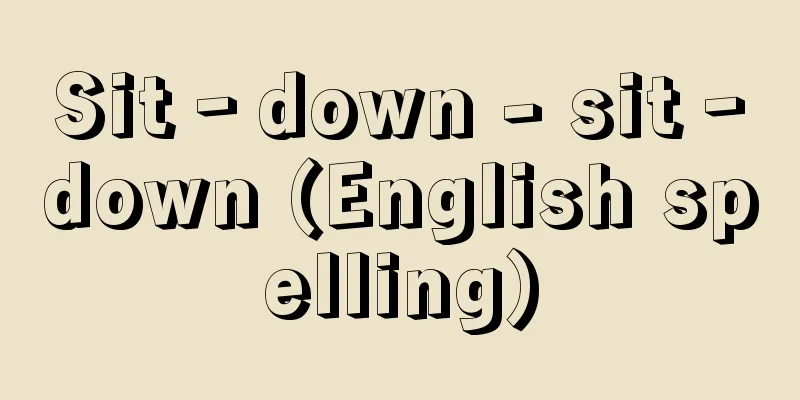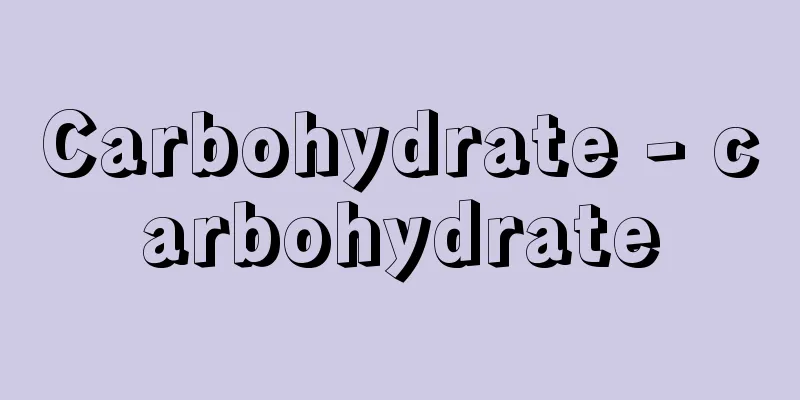Desire - Need (English spelling)

|
A person starts to act toward a goal and tries to continue that action to achieve the goal. This series of actions is motivation. Motivation that arises from within a person is called a drive, and motivation that is induced from the outside is called an incentive. Needs can be broadly divided into physiological needs or primary needs and psychological needs or secondary needs. Primary needs are basic needs that animals are born with, and they are related to the survival of an individual, such as relieving hunger and thirst, sleeping, breathing, excretion, avoiding physical pain, and maintaining body temperature, as well as those related to the preservation of the species, such as sexual impulses and maternal behavior. Of these, the need to maintain life is called homeostasis, a name given by Cannon, WB (1932), and can be said to be a need that arises to eliminate physiological imbalances from the perspective that a constant state of equilibrium within the body is necessary for living organisms to maintain their lives. Hull, CL, proposed the drive reduction theory, which states that behavior is strengthened when homeostasis is satisfied and drives are reduced, but it cannot explain behavior that does not require homeostasis, such as sexual behavior, maternal behavior, or behavior based on psychological needs. Secondary needs are needs that are acquired through learning, and include social needs and needs related to self-actualization. Many of these are formed when behavior to satisfy physiological needs is socialized or when the means to that end are turned into an end. Murray, HA (1938) has compiled a classification list of various psychogenetic needs, such as achievement, use of power, love, and affinity. Based on the view that humans grow toward self-actualization, Maslow, AH (1943, 1954) proposed the need hierarchy theory, which classifies needs from low to high in a hierarchy. From the lowest level, there are five hierarchical levels: physiological needs, safety needs, belonging and love needs, esteem needs, and self-actualization needs. Although Maslow himself did not include them in his hierarchy, he also described cognitive needs and aesthetic needs, which are sometimes placed between esteem needs and self-actualization needs. Basically, the lower the need, the stronger it is, and actions to satisfy it are given priority, and higher needs are suppressed until they are achieved. However, even if lower needs are not satisfied, higher needs may arise strongly. Self-actualization needs are sometimes called growth needs or being needs, and the other four are called deficiency needs, to distinguish them. Deficiency needs are needs to satisfy what is lacking, and once they are satisfied, there is no need for more. Growth needs are qualitatively different and arise only when these deficiency needs are satisfied. They are the most human needs related to self-growth and creativity, but it is thought that very few people reach this stage. Frustration is the unpleasant and tense state that results when a person fails to reach a goal despite taking action based on a desire, or when the action is blocked midway. There are several hypotheses, such as the frustration-aggression hypothesis, which posits that frustration causes aggressive behavior, and the frustration-regression hypothesis, which posits that frustration causes behavior similar to that seen in younger people. Frustration progresses in three stages, depending on the situation, the state in which the person was, and the reaction. Individual differences in the ability to tolerate frustration are called frustration tolerance. The PF study is a psychological test developed by Rosenzweig, S. (1978) to measure an individual's response to frustration using 24 pictures. →Motivation [Takatoshi Taniguchi] Latest Sources Psychology Encyclopedia Latest Psychology Encyclopedia About Information |
|
人はなんらかの目標に向かって行動を開始して,目標を達成するためにその行動を続けようとする。この一連の働きが動機づけmotivationである。動機づけを人の内部から引き起こすものを欲求あるいは動因drive,外部から誘発するものを誘因incentiveという。欲求は,生理的欲求physiological needあるいは1次的欲求primary needと,心理的欲求psychological needあるいは2次的欲求secondary needに大別される。1次的欲求は,動物として生得的に備わっている基本的な欲求であり,飢えや渇きの解消,睡眠,呼吸,排泄,身体的苦痛の回避,体温維持など,個体の生命維持にかかわるものや,性衝動,母性行動など種の保存にかかわるものである。このうち生命維持に関する欲求は,キャノンCannon,W.B.(1932)によって名づけられたホメオスタシスhomeostasis,すなわち生物がその生命を維持するために身体内部の恒常的な平衡状態が必要であるという観点から,生理的な不均衡を解消するために生じる欲求であるといえる。ハルHull,C.L.は,ホメオスタシスが満たされて動因が低減されることが行動を強化するという動因低減説drive reduction theoryを唱えたが,性行動や母性行動,あるいは心理的欲求に基づく行動などホメオスタシスを前提としない行動については説明できない。2次的欲求は,学習によって後天的に獲得される欲求であり,社会的な欲求や自己実現に関する欲求などがある。これらの多くは,生理的欲求を満たすための行動が社会化していったり,その手段が目的化したりして形成されたものである。マレーMurray,H.A.(1938)は,達成,力の行使,愛情,親和などさまざまな心理発生的欲求psychogenetic needを分類リストにまとめている。 マズローMaslow,A.H.(1943,1954)は,人間は自己実現に向かって成長するという人間観に基づいて,欲求を低次から高次に階層化して分類する欲求階層説need hierarchy theoryを提唱した。低次の方から,生理的欲求,安全欲求safety need,所属と愛の欲求belonging and love need,承認欲求esteem need,自己実現欲求self-actualization needの5階層である。なお,マズロー自身は欲求階層の中には入れていないが,知識を求める認知欲求cognitive need,美的欲求aesthetic needについても記述されており,これらが承認欲求と自己実現欲求の間に入れられることもある。基本的には低次の欲求ほど強く,その充足行動が優先され,それが達成されるまではより高次の欲求は抑制される。しかし,低次の欲求が充足していなくとも,高次の欲求が強く生じる場合もある。また,自己実現欲求を成長欲求growth need,あるいは存在欲求being need,ほかの四つを欠乏欲求deficiency needとよび,区別することもある。欠乏欲求とは不足しているものを満たすための欲求であり,充足されればそれ以上求めることはない。成長欲求はこれら欠乏欲求が満たされて初めてもたらされるもので,質的に異なっており,自己の成長や創造にかかわる最も人間的な欲求であるが,この段階に達する人は非常に少ないと考えられている。 欲求に基づいて行動を起こしても目標に到達できなかった場合や,途中で行動が阻止された場合などに,その結果としてもたらされる不快で緊張した状態が欲求不満(フラストレーション)frustrationである。欲求不満が原因となって,攻撃行動を引き起こすという欲求不満-攻撃仮説frustration-aggression hypothesis,低年齢のときに戻ったような行動を引き起こすという欲求不満-退行仮説frustration-regression hypothesisなどがある。欲求不満は,どのような状況で,どのような状態になり,どのような反応をしたかという三つの段階で順番に進む。欲求不満に耐える能力の個人差は欲求不満耐性frustration toleranceとよばれる。24場面の絵画によって欲求不満に対する個人の対応を測定するためにローゼンツァイクRosenzweig,S.(1978)が開発した心理検査がP-FスタディP-F studyである。 →動機づけ 〔谷口 高士〕 出典 最新 心理学事典最新 心理学事典について 情報 |
>>: The Elder of Succession - Yotsugi no Okina
Recommend
Tsuno [town] - Tsuno
A town in Koyu County facing the Hyuga-Nada Sea in...
Wi-ssi Chosǒn (English spelling)
The name of the kingdom of ancient Korea. It is co...
Hiroshi Mikado
1907-1998 A rakugo performer from the Showa era. ...
Alopiidae
…A general term for marine fish belonging to the ...
Phaseolus lunatus (English spelling) Phaseoluslunatus
...The common bean, native to South America, is a...
Ephori
In the Spartan Empire, the king was elected by fi...
Analog Computer
A computer that can calculate analog quantities wi...
Mohenjo daro (English spelling)
The ruins of the largest city of the Indus Valley ...
National textbooks - kokutei ikyoukasho
Textbooks are written and edited by a government a...
Goodyera repens (English spelling) Goodyerarepens
… [Ken Inoue]. … *Some of the terminology that me...
Shigeyuki Minamoto
A poet of the mid-Heian period. He was the grands...
Androgen
…the male sex hormone, also known as the androgen...
Accountant
In these countries, the work of accountants was v...
Temple name - Indengo
...However, aristocrats and military commanders o...
American National Standards Institute - American National Standards Institute
...It is necessary to continue making efforts to ...









